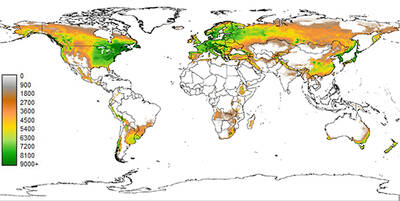GAEZ - Global Agro-Ecological Zones
Food and Agriculture Organization of the United Nations (FAO) and the International Institute for Applied Systems Analysis (IIASA) have developed the Agro-Ecological Zones (AEZ) methodology over the past 30 years for assessing agricultural resources and potential. Rapid developments in information technology have produced increasingly detailed and manifold global databases, which made the first global AEZ assessment possible in 2000. Since then global AEZ assessments have been performed every few years. With each update of the system, the issues addressed, the size of the database, and the number of results have multiplied.
This is the most ambitious assessment yet and the goal is to make publicly available the entire database and all results of this assessment. This amounts to many terabytes of data covering five thematic areas:
- Land and water resources, including soil resources, terrain resources, land cover, protected areas and selected socio economic and demographic data;
- Agro-climatic resources, including a variety of climatic indicators;
- Suitability and potential yields for up to 280 crops/land utilization types under alternative input and management levels for historical, current and future climate conditions;
- Downscaled actual yields and production of main crop commodities, and
- Yield and production gaps, in terms of ratios and differences between actual yield and production and potentials for main crops.
The GAEZ database provides the agronomic backbone for various applications including the quantification of land productivity. Results are commonly aggregated for current major land use/cover patterns and by administrative units, land protection status, or broad classes reflecting infrastructure availability and market access conditions. With this large amount of data, a new system had to be created to make the data accessible to a variety of users. The result is the new GAEZ Data Portal, an interactive data access facility, which not only provides free access to data and information and allows visualization of data, but also provides the user with various analysis outputs and download options.

